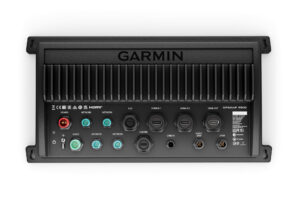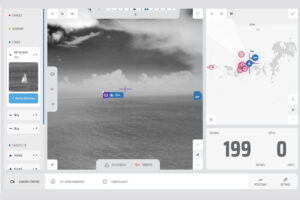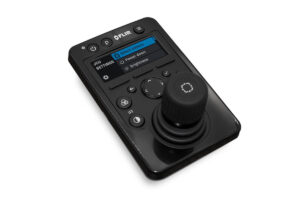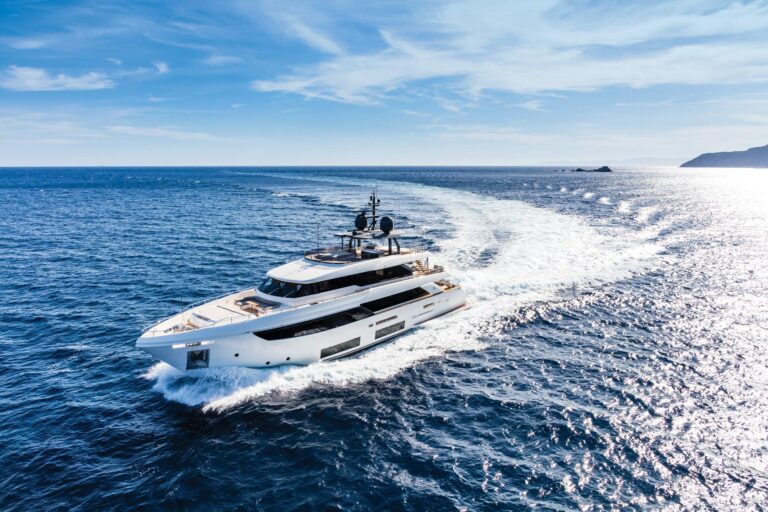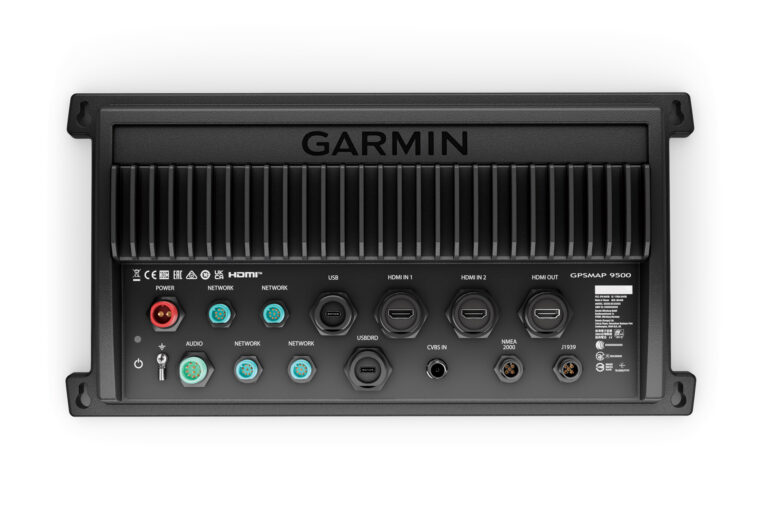Raymarine refers to the Ray 230, the flagship of its VHF line, as the “ultimate modular solution for onboard communication”. Considering the crowded helm consoles aboard many boats, owners who have a space problem may agree.
I saw a demonstration of a Ray 230 prototype a year ago and liked the concept of combining a VHF with digital selective calling, a cell phone and a PBX phone in a single package that comprises a transceiver, a submersible telephone-style handset and a small, nearly square speaker. The optional dual-tone multi-frequency telephone interface lets you connect the Ray 230 to the Raycom 3W marine cell phone, or directly to a standard dockside telephone line.
The cell-phone interface wasn’t functioning during last year’s preview, but it was during a demonstration in February, at the Miami International Boat Show. We didn’t have a PBX line aboard to evaluate that connection, and we couldn’t activate the DSC distress-call function without creating an unnecessary crisis, but after my second look at the Ray 230, I am still impressed with the concept.
Although the handset is larger than almost any cell phone you’d want to carry around all day, it’s fine aboard the boat. The keypad is large enough to use without pressing two keys at once, and it’s designed like the keypad on any telephone.
The LCD is large, and the images are clear. Raymarine’s modular design lets the boat owner mount the transceiver inside the helm console, out of sight and out of the way. The handset rests in an unobtrusive bracket that mounts virtually anywhere.
The speaker impressed me more than any other aspect of the Ray 230. It is by far the clearest VHF speaker I’ve heard, no matter how high the volume is ramped up. Raymarine achieves such clarity by equipping the speaker with its own amplifier. Because the speaker is so easy on the ears, it may be mounted almost anywhere near the helm. (Our test boat had the speaker face up on the flat top of the helm console.) A single knob serves as the on/off switch and volume control.
Making and receiving cellular calls is the same as you’ve experienced with your personal cell phone, but the size of the Ray 230 handset makes it a lot easier to hold than today’s miniature models. The reception in cellular mode is great because the 230 uses the boat’s cellular antenna.
Most folks on our test boat operated the keypad with the same hand that held the handset. If you have short fingers, you’ll need to use both hands. Volume and squelch keys atop the keypad are similar to the volume and channel keys on your TV’s remote.
Just beneath the LCD are the power keys, one for the individual set, the other for all the sets on the boat (the system permits a maximum of three stations). The distress key is on the back of the handset, protected from accidental actuation by a gate.
The 230 comes with a built-in hailer and fog function, manual and auto in four siren modes. A suggested retail price of $1,105 with the telephone interface is quite a deal when you consider the 230’s versatility.
Contact: Raymarine Inc., (603) 881-5200; fax (603) 864-4756; www.raymarine.com.

